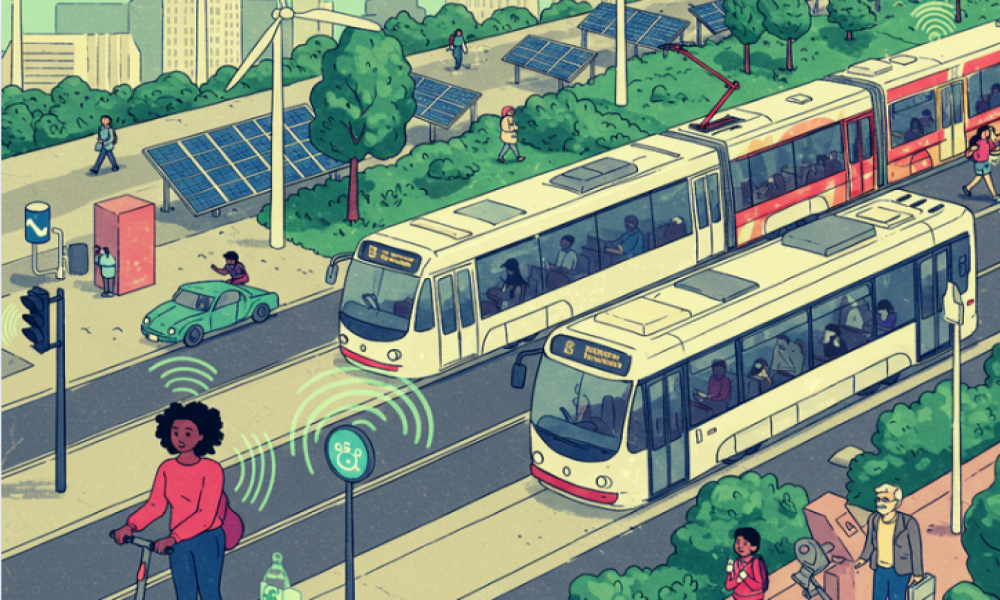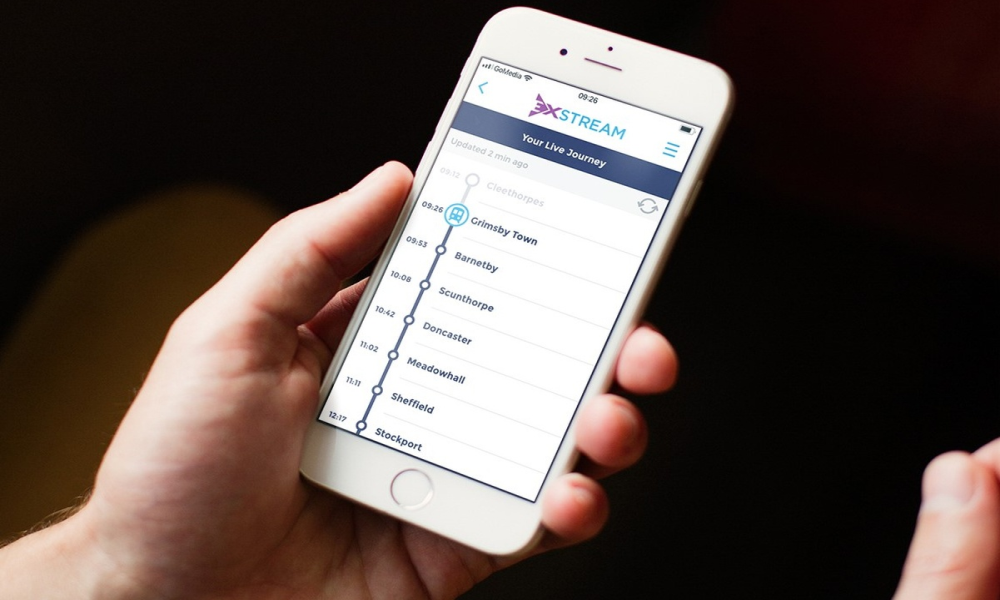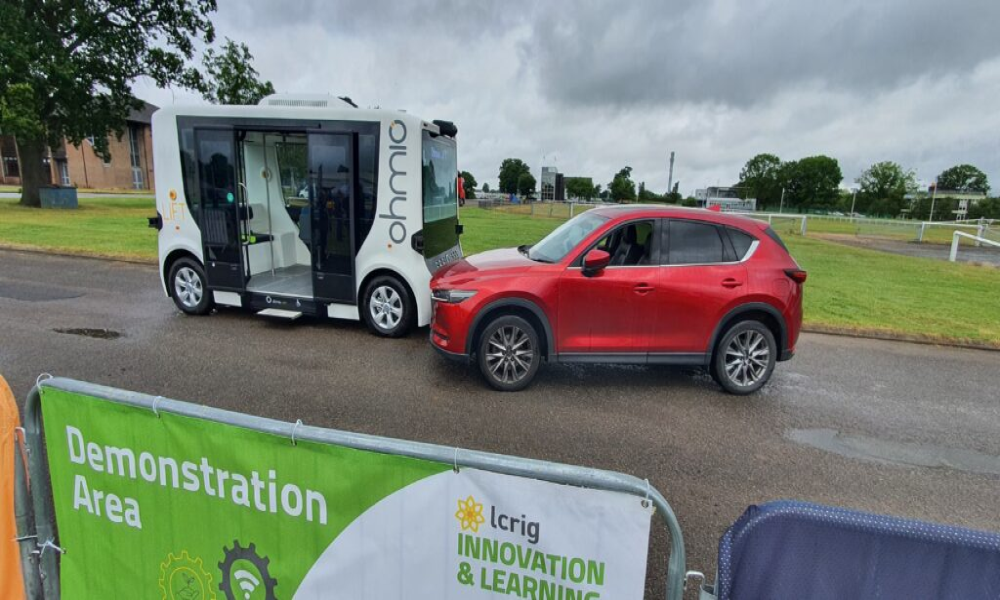In an era defined by rapid technological advancement, the integration of Intelligent Transport Systems (ITS) into our daily lives holds immense promise. Yet, as we navigate the complexities of smart and connected mobility, a fundamental question arises: How can ITS truly serve society, ensuring that its benefits extend beyond mere efficiency and connectivity to encompass inclusivity, sustainability and equity for all?
This critical inquiry must be central to all discussions and developments within the ITS sector. More than just a theoretical consideration, this theme needs to permeate every aspect of ITS innovation and implementation. From carefully designed systems and insightful technical research to compelling real-world deployments and practical applications, stakeholders must focus on the profound implications of human-centric ITS. The ITS community serves as a vital nexus, inviting public authorities tasked with shaping urban futures, visionary industry leaders driving innovation, dedicated researchers pushing the boundaries of knowledge and agile innovators developing groundbreaking solutions to collectively explore how ITS can effectively address pressing societal challenges while simultaneously fostering progress.

Societal Challenges and ITS Opportunities: Bridging the Gaps
The successful and widespread adoption of ITS is intrinsically linked to its ability to demonstrably fulfil the diverse needs of its users and the degree to which these users embrace the transformative potential of these systems and services. The escalating pressures of growing urbanisation, coupled with the ever-increasing demands of freight transport, have placed a significant strain on environmental sustainability, demanding innovative solutions that decouple economic growth from ecological degradation. In this context, the powerful forces of digitalisation, the imperative of electrification across transport modes and the seamless integration of diverse transport options through multimodality are emerging as pivotal drivers in the creation of truly sustainable mobility ecosystems.
However, the pursuit of smarter mobility cannot come at the expense of social cohesion. Some of the most pressing societal challenges directly related to the movement of both people and goods revolve around fundamental issues of equity, accessibility and inclusivity. ITS possesses the unique potential to act as a powerful bridge, effectively closing existing gaps and ensuring that all demographic groups, irrespective of their geographic location, socio-economic status, age, or physical ability, enjoy fair and equitable access to safe, efficient and reliable transportation services.
A diverse array of ITS innovations holds the key to achieving this crucial objective. Enhanced connectivity ensures that real-time information and seamless communication are available to all, empowering individuals to make informed travel decisions. The carefully considered implementation of automation can improve accessibility for those with mobility limitations. The digitalisation of infrastructure creates intelligent networks that can adapt to diverse needs. Human-centric design principles place the user experience at the forefront, ensuring that ITS solutions are intuitive and user-friendly for everyone. The strategic use of space and the innovative integration of multimodality and Mobility-as-a-Service (MaaS) concepts offer flexible and tailored transportation options that cater to a wide spectrum of individual requirements. By thoughtfully deploying these advancements, ITS can become a powerful catalyst for a more just and inclusive society.

Real-World Applications: Witnessing Innovation in Action
It is crucial for the ITS community to actively engage with tangible examples of how cities and various stakeholders are actively leveraging ITS to address these very societal challenges. Through compelling presentations and interactive discussions, stakeholders can gain invaluable insights into pioneering initiatives specifically designed to create fairer and more inclusive transport systems. Exhibitions and dedicated technical sessions can serve as vibrant showcases of cutting-edge technologies and solutions, offering in-depth analyses of the strategies and methodologies employed. Underlying these efforts must be a common thread: a commitment to human-centric design, the pervasive power of connectivity and the seamless integration of diverse transport modes to create truly accessible mobility solutions.
Furthermore, exploring this critical topic should extend beyond theoretical discussions through real-world demonstrations of inclusive public transport innovation in practice. This vividly illustrates how smart systems are being meticulously designed from the ground up to work effectively and equitably for every member of the community.

Linking Public Transport, Logistics and Workforce Transformation: A Holistic Approach
Innovation within public transport, fuelled by transformative technologies such as Artificial Intelligence (AI), sophisticated big data analytics and the pervasive Internet of Things (IoT), is fundamentally revolutionising the operational paradigms of public transport systems. These advancements are leading to significant enhancements in efficiency, bolstering safety protocols and dramatically improving the overall user experience. The long-held vision of seamless, integrated mobility is drawing ever closer to reality, thanks to the rapid progress in MaaS platforms, the provision of real-time transit information that empowers commuters and the implementation of convenient and unified smart ticketing systems.
In parallel, the transport of goods faces its own set of critical challenges, particularly concerning the imperative for responsible and sustainable logistics practices. The increasing complexity and geographical dispersion of modern supply chains underscore the urgent need for optimising freight operations to enhance efficiency, drastically lower carbon emissions to mitigate environmental impact and minimise waste across the entire logistics lifecycle. Innovative ITS solutions are at the forefront of pioneering sustainable freight practices, with examples ranging from the adoption of green delivery alternatives such as electric and hydrogen-powered vehicles to the development of intelligent logistics hubs that streamline operations, and the establishment of urban consolidation centres designed to reduce congestion and emissions in city centres.
However, the widespread deployment and ultimate success of ITS are inextricably linked to public perception and understanding of these novel mobility solutions. Concepts such as automated driving systems, a diverse array of micro-mobility options and intricately integrated transport systems require public trust and acceptance to achieve their full potential. Moreover, the rapid transition driven by automation and digitalisation inevitably has significant consequences for the existing workforce within the transportation sector. While the multifaceted benefits of ITS are increasingly persuasive, garnering widespread public trust in these new technologies necessitates a proactive and thoughtful consideration of the need for reskilling and upskilling initiatives to support the workforce in navigating this transforming industry landscape.
Finally, the path to widespread ITS deployment is not without its obstacles. Several deployment barriers often associated with the introduction of new technologies must be effectively addressed. These include navigating complex regulatory constraints, managing potentially high initial implementation costs and diligently addressing legitimate concerns surrounding data privacy and security. Overcoming these challenges will require concerted efforts in policy coordination across different levels of governance, strategic investment in enabling infrastructure and a sustained commitment to fostering continuous innovation. Only through a holistic and collaborative approach can we ensure that ITS truly delivers its promised widespread societal benefits, creating a future where mobility is not only smart and connected but also fundamentally inclusive, sustainable and equitable for everyone.

150x150.png)